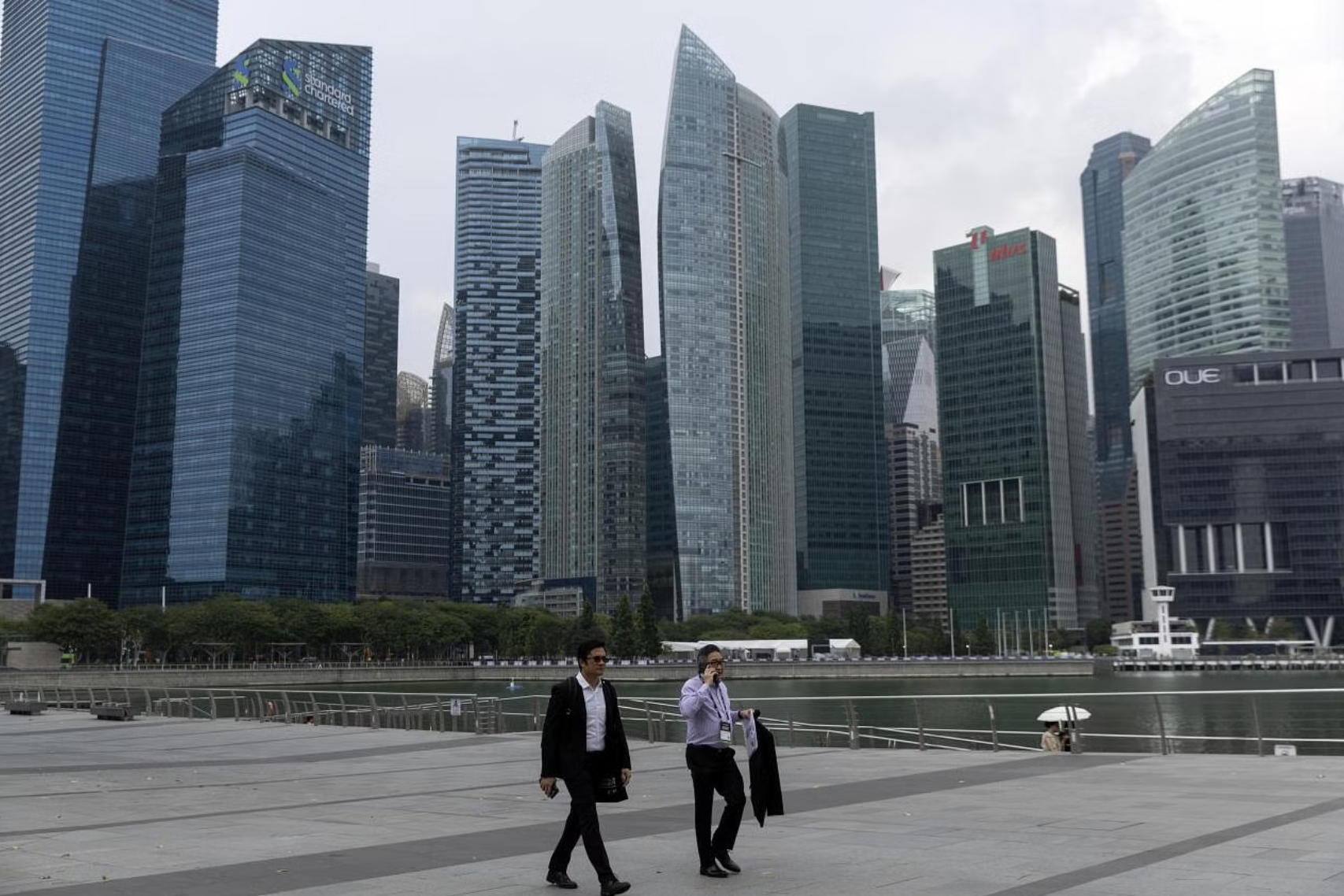Singapore office rents climb 4.9%, prices rise 0.8% in Q3: URA

OFFICE rents in the central region of Singapore continued rising in the third quarter of 2023 as the stock of office space decreased by 42,000 square metres (sq m), data released by the Urban Redevelopment Authority (URA) showed.
Rents for office space rose 4.9 per cent in Q3 2023. This was much higher than the 2.3 per cent increase seen in the preceding quarter, URA said on Friday (Oct 27).
The rise in office rentals could have been driven by Grade A offices, as landlords held on to their rental expectations amid low levels of vacancy rates and rising operating costs, said Wong Xian Yang, head of research Singapore and South-east Asia at Cushman & Wakefield (C&W).
Meanwhile, JLL’s head of research and consultancy Tay Huey Ying attributed the increase largely to leasing deals that were concluded several quarters back when occupier demand was robust, underpinned by the growth in the technology sector.
The slowing and uncertain economy did not deter office rents from holding up, rising 12.8 per cent in the first nine months of 2023 based on the index, noted Knight Frank’s head of research Leonard Tay.
He added that the supply of office space in the Central Business District (CBD) would remain tight until next year, and that most office occupiers were thus “more inclined to renew their rental contracts due to cost efficiency compared with relocation”.
For Category 1 offices that are located in Downtown Core and Orchard Planning Area, median rent based on lease commencement was S$12.31 per square foot per month (psf pm) in Q3, up from S$11.44 psf pm in Q2.
These are usually office spaces that are relatively modern or recently refurbished, command high rentals and have large floor plate size and gross floor area (GFA).
For the remaining office spaces in Singapore that are classified as Category 2, median rent in Q3 was S$6.24 psf pm, a slight drop from the S$6.25 psf pm in Q2, according to URA.
C&W’s Wong said that rental growth in the CBD area may moderate in subsequent quarters, amid an expected higher-for-longer interest rate regime and global economic uncertainties.
Meanwhile, prices of office space edged up by 0.8 per cent in Q3, compared with a 1 per cent rise in the second quarter.
Knight Frank’s Tay observed that the high interest rate environment might have kept institutional investors from purchasing. There were no significant office transactions during the quarter. “Most investors have adopted a wait-and-see approach, until such time as the market re-prices,” he explained.
At the end of Q3, islandwide office supply was at about 1,097,000 sq m of GFA, higher than the 927,000 sq m GFA space at the end of Q2.
Office supply is expected to increase in 2024, leading to more competition for tenants, said C&W’s Wong. The completion of IOI Central Boulevard Towers and Keppel South Central will contribute about 1.9 million square feet (sq ft) of new office supply in the CBD next year, alongside a potential emergence of substantial secondary stock, he noted.
Tricia Song, CBRE’s head of research Singapore and South-east Asia, said that shadow-space demand tapered off in the last quarter, with the amount of shadow space in Q3 2023 halved to 0.33 million sq ft, from the record high of 0.7 million sq ft in the first quarter of 2023.
Shadow space refers to excess space on an existing lease obligation that a tenant would like to give up by finding a replacement tenant for the landlord.
Net demand, as measured by the amount of occupied office space, rose by 23,000 sq m in Q3. This is compared with a rise of 30,000 sq m in Q2.
The main demand drivers for office space in the CBD have been the financial and professional service sectors, said C&W. According to its data, firms in these sectors drove 58 per cent of new leases in the CBD in the first nine months, up from 26 per cent for the whole of 2022.
The stock of office space declined 42,000 sq m in Q3, after contracting by 7,000 sq m in the previous quarter.
The islandwide vacancy rate for office space fell to 10 per cent as at end-September, from 10.8 per cent as at end-June.
CBRE said that tighter market conditions arising from project redevelopments and stock removals have helped to raise occupancy levels. “About 0.45 million sq ft of office space was removed this quarter, which could have been attributed to redevelopment projects such as Faber House, Central Square and Central Mall,” elaborated Song.
C&W’s Wong noted that vacancy rates in the central area fell for a sixth quarter to 10.2 per cent in Q3, marking a 2.5-year low. This was largely due to net demand in CBD office spaces of 398,264 sq ft in Q3, the strongest quarter-on-quarter growth since Q1 2020.
In contrast, net demand in the rest of the central area, which includes areas such as Outram, River Valley, Rochor and Newton was a negative 161,459 sq ft, pointed out C&W. This difference could be reflective of flight to quality, with a strong concentration of Grade A offices located within the CBD.
Looking ahead, JLL’s Tay sees office demand remaining subdued as occupiers adopt a “tentative mindset” given the heightened geopolitical tensions and higher-for-longer interest rate environment.
With office oversupply expected for the short term in 2024, there will be downward pressure on rents in the coming quarters, she added.
CBRE projects Grade A office rents to grow by 1.5 per cent to 2 per cent for 2023, outpacing projected gross domestic product growth, but slower than the 8.3 per cent rental growth in 2022.




